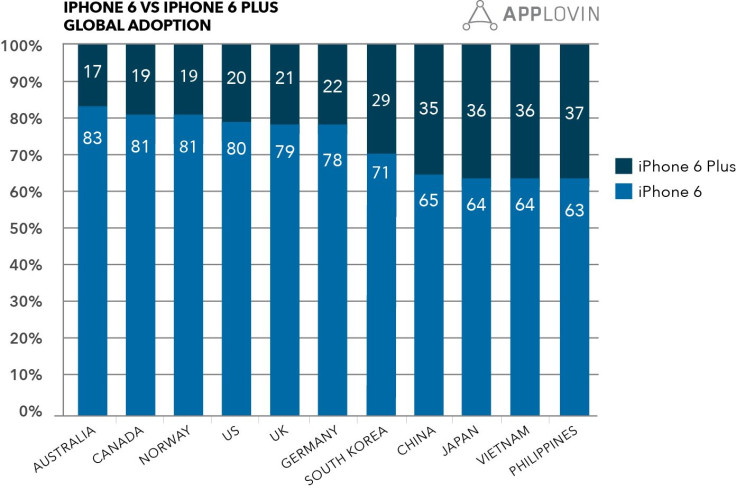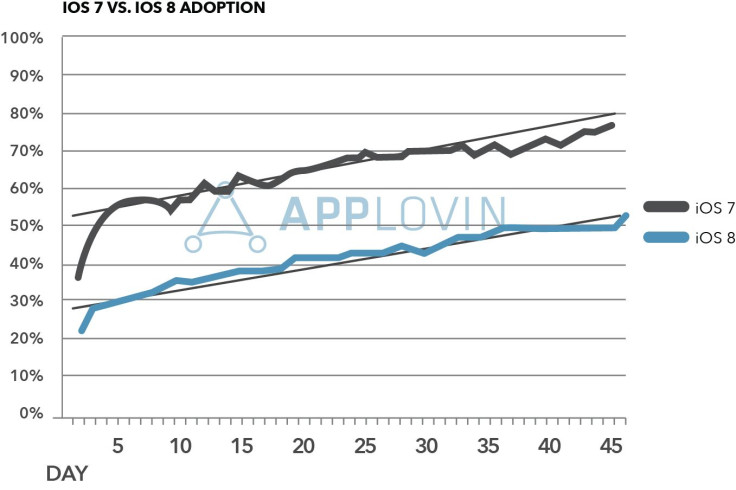Apple's Phablet Bet Pays Off In Asia As Adoption Of iPhone 6 Plus Is Twice As High As The US

One thing Samsung figured out a long time ago: Asian consumers love big-screen smartphones. So it should be no huge surprise that Apple's big bet on the phablet is paying off in Asian markets, where demand for the big-screen iPhone 6 Plus is running twice as high as in Western nations.
In countries such as China, Japan, Vietnam and the Philippines, Apple’s iPhone 6 Plus accounts for 35 percent of new iPhones in use, according to mobile ad firm AppLovin. The one exception to that trend is South Korea, where the iPhone 6 Plus held only a 29 percent share of new iPhones used in the country dominated by the line of Galaxy and Note devices by South Korean manufacturer Samsung.

“No one expected iPhone 6 Plus to match or surpass the heights of iPhone 6, but usage was more robust than expected -- especially in areas where phablets are already popular,” AppLovin said in a press release. “It’s clear that with the 6 Plus, Apple has more than just a niche player on its hands.”
The phablet category, defined as a smartphone with screen sizes of 5.5 inches to just under 7 inches, has skyrocketed in recent years and is expected to surpass portable PCs by the end of 2014 and tablets by 2015, according to IDC. Fueling this demand are Asian countries and emerging markets, where larger-screened smartphones were more preferred, a research study by Jana found.
Though Apple has been steadily rolling out the iPhone 6 and 6 Plus in more countries since their release in September, its supply chain has struggled to keep up with demand. Foxconn and a number of other Apple partners are said to be hiring more employees to close the gap. But in the meantime, visitors to the Apple online stores continue to see wait times ranging from a few days to a few weeks for the iPhone 6 Plus.
Apple's ability to make products that appeal to Asian markets is key to its growth. As CEO Tim Cook said in October, "It's just a matter of time" before China becomes Apple's biggest revenue producer.
In the U.S. and other Western countries, iPhone 6 Plus adoption remained as expected, with adoption hovering at around 20 percent.

The study also found that iOS 8 adoption has continued to lag behind iOS 7. It’s a problem which Daring Fireball’s John Gruber theorizes is due to the large storage requirements for the mobile OS update file. Apple’s iOS 8 currently accounts for 56 percent of all iOS devices used, according to the company’s developer page. But it may remedy itself as Apple continues to sell more iPhones in the upcoming year, which the company will hardly have a problem doing if demand keeps up during the winter holiday season and beyond.
© Copyright IBTimes 2024. All rights reserved.






















